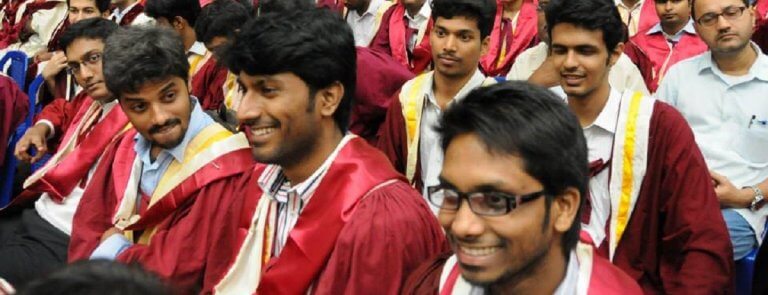
The Madras campus of the Indian Institute of Technology group of universities is India’s top engineering college. And for the third-year running too.
There’s a simple formula for IIT Madras‘ success: They get the “basics right”.
Speaking to Quartz India, Narayanan Ramaswamy, a partner and head of the education practice at consultancy firm KPMG India said:
“What should an engineering institute do—I think they’ve got that right. Rather than doing fancy stuff, they keep it simple so it is easy to achieve.”
Its academic excellence remains constant and undisputed even with reports about unsatisfactory canteen food and even caste wars. Sympathisers of the Ambedkar Periyar Study Circle (APSC) which is loyal to the anti-Brahmin icons Bhimrao Ambedkar and Periyar EV Ramaswmi Naicker, often criticise IIT for admitting mostly Brahmins. Brahmins are generally head of the hierarchy caste system.
“Not only students, the composition of the faculty at IIT-Madras is also overwhelmingly upper caste with 464 professors drawn from the ‘general category,’ 59 other backward castes, 11 scheduled castes (Dalits, formerly deemed untouchable), and two scheduled tribes,” wrote Open Magazine three years ago.
Yet, despite this, IIT Madras is ranked 2nd in the overall ranking of Indian institutes of higher learning. Its graduates received the best job offers – with increases in local and international offers – among India’s top engineering colleges during the December 2017 placement season. Beating IIT Bombay, which usually gets the best placements, IIT Madras graduates also received offers from global firms like Apple and Nasdaq. Pay packages are higher too – with one student offered a package of Rs 99.8 lakh from Uber.
It also surpasses all other IITs in terms of the number of patent applications.
Ramaswamy of KPMG said: “They (IIT-M) have ensured that the pedagogy (is strong)…also, the student mix they get, the kind of faculty and facilities…show that they’re serious. Some of the research that happens here is giving output in terms of IP (intellectual property).”
It’s an impressive list of achievements among reports of Indian engineering graduates lacking the skills to enter the working world. A survey by New Delhi-based employment solutions company, Aspiring Minds in 2016 found only 7 percent of engineering graduates can handle core engineering tasks.
IIT Madras’ performance should be seen in the wider context as well – they are competing in a big pool of talent. India Times cites government data that show the country has 6,214 engineering and technology institutions which are enrolling 2.9 million students. They produce around 1.5 million engineers yearly.
Foreigners lack interest in joining Indian universities – report https://t.co/18VV49qNkN pic.twitter.com/9dFyEWpHgq
— Study International (@Study_INTNL) August 16, 2017
While Indian universities like IIT Madras can proudly showcase their academic quality, when it comes to admitting students from abroad, it is still lacking in this aspect. A report last year revealed international students are just not applying to Indian universities, recording a drop in the number of enrolments – a result researchers say reflects the unfulfilled potential of the country’s education system.
While India has seen a massive increase in the number of international students since 2000 – a mere 7,791 then – there were only 30,423 international students in 2014, according to the Association of Indian Universities’ annual report.
The figure is a far cry from the 4.85 million universities are allowed to enrol. Under the country’s policy framework, universities and colleges are allowed to admit international students up to 15 percent of their total student cohort.
Liked this? Then you’ll love these…
US Consul General in India declares June 6 ‘Visa Day’
Indian students form bulk of decline in US international student enrollment







